Danish Rye Bread (Rugbrød) is dense, hearty, and packed with rye flour, whole grains, and a variety of nutritious seeds. A true staple of Nordic cuisine, this richly flavored, slightly tangy bread is the foundation of smørrebrød (Danish open-faced sandwiches) and a key part of the Scandinavian diet.
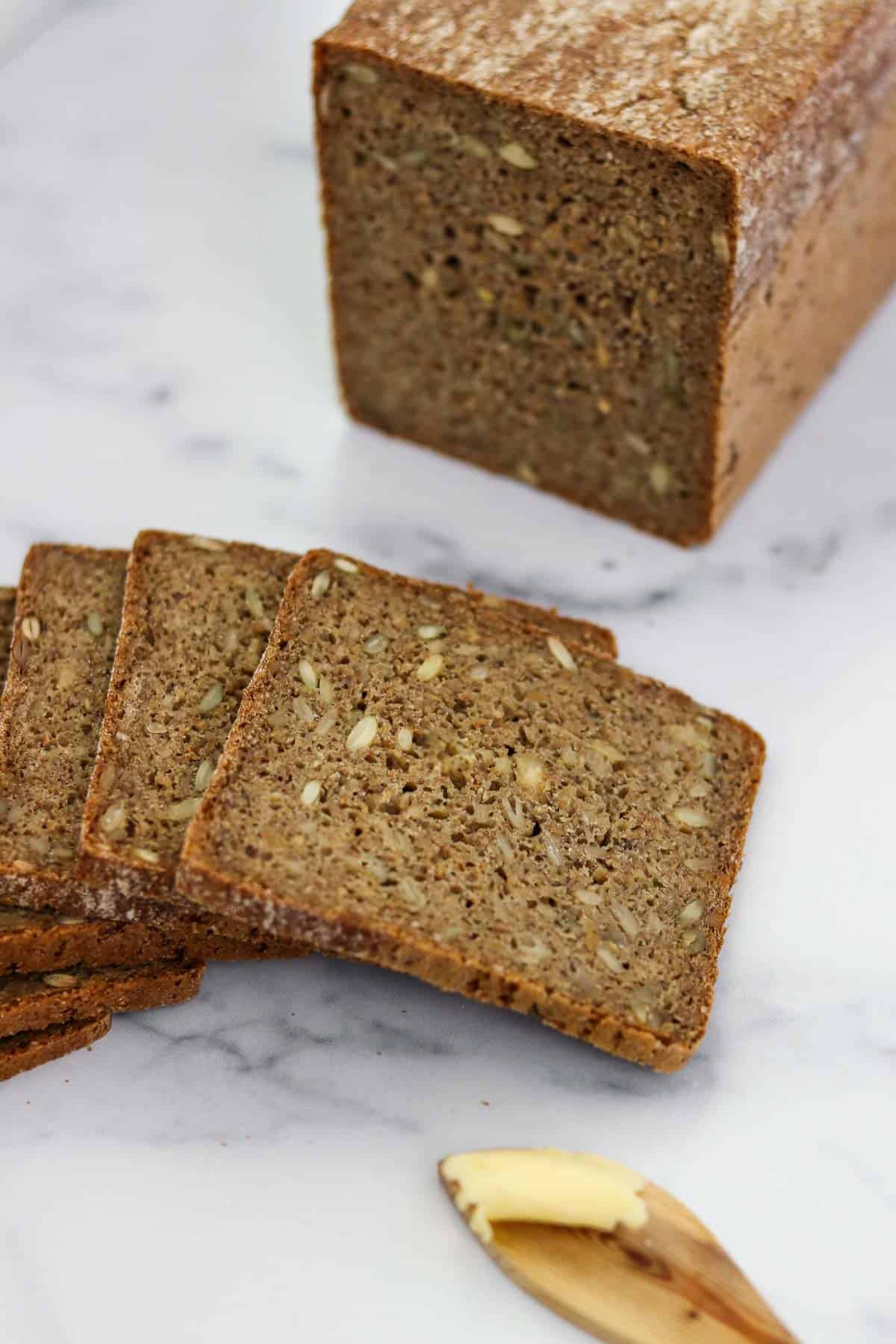
If you’ve ever tried to find authentic rugbrød in the U.S., you know it can be a challenge. Most store-bought rye bread here is closer to deli rye or pumpernickel, lacking the depth and texture of traditional Danish rye. But the good news? You can make it at home—easily!
If you keep a sourdough starter around, you might also want to consider trying my recipe for Sourdough Danish Rye Bread (Rugbrød) which is also really delicious!
Jump to:
Ingredients
For the Soaker:
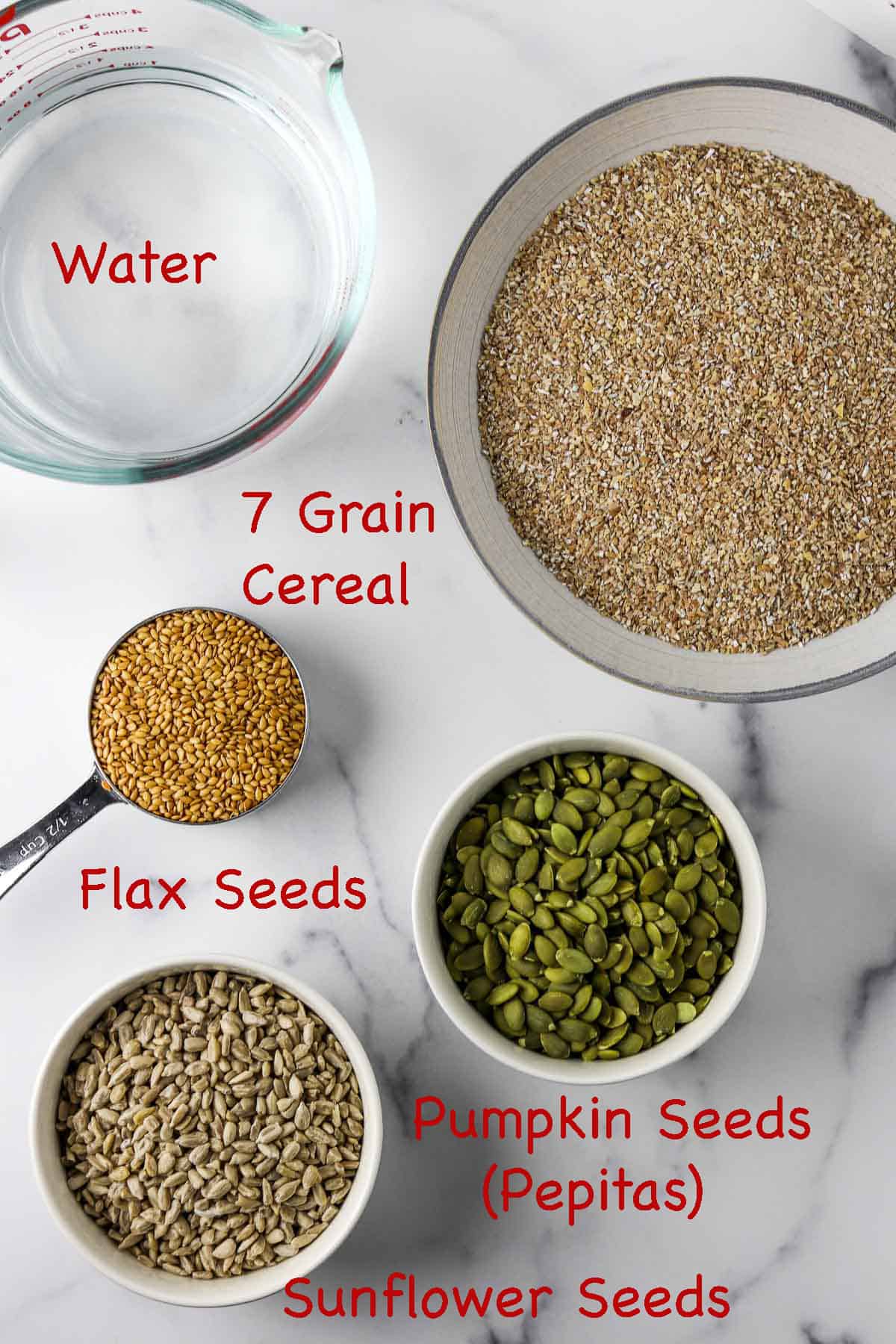
- 7 grain cereal - provides the hearty backdrop of the bread. Traditional rugbrød recipes call for rye chops which are just coarsely chopped pieces of rye grains. Because rye chops can be hard to find in the U.S., this recipe calls for a 7 grain cereal mix instead (feel free to use rye chops if you have access to them! They work just as well here). 7 grain cereal mix is simply a combination of several different coarsely chopped grains including wheat, rye, triticale, oats, oat bran, barley and/or brown rice. I often use the Bob's Red Mill brand, but have also had good luck with this mix from Nuts.com.
- Sunflower, pumpkin and flax seeds - bring texture, flavor and nutrients to this hearty, substantial loaf.
For the Dough:
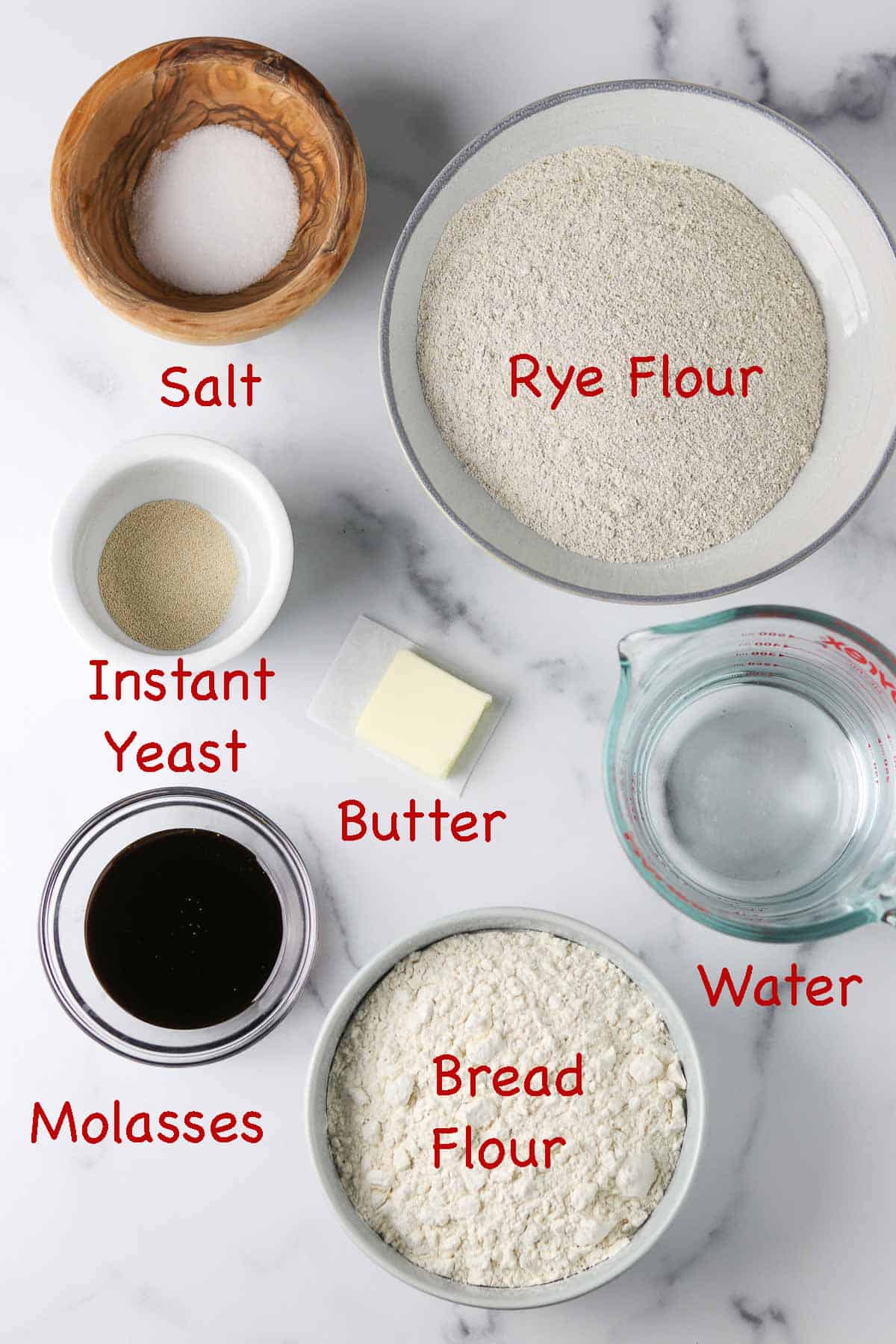
- A combination of bread flour and rye flour - is key to providing the gluten structure this bread needs to keep its shape.
- Instant yeast - serves as the leavener. Please note that instant or rapid rise yeast and active dry yeast are two different things. The essential difference between the two is that instant yeast can be mixed right in with the dry ingredients whereas active dry yeast is designed to be proofed in warm liquid prior to adding it to the recipe. Instant yeast is also more reliable, effective and fast-acting.
- Molasses - not only sweetens and flavors the dough, it also helps deepen the dark brown color of the final loaf.
- Water
- Salt
- Butter - for greasing the pan.
The Equipment
How To Make Danish Rye Bread (Rugbrød)
The Night Before:
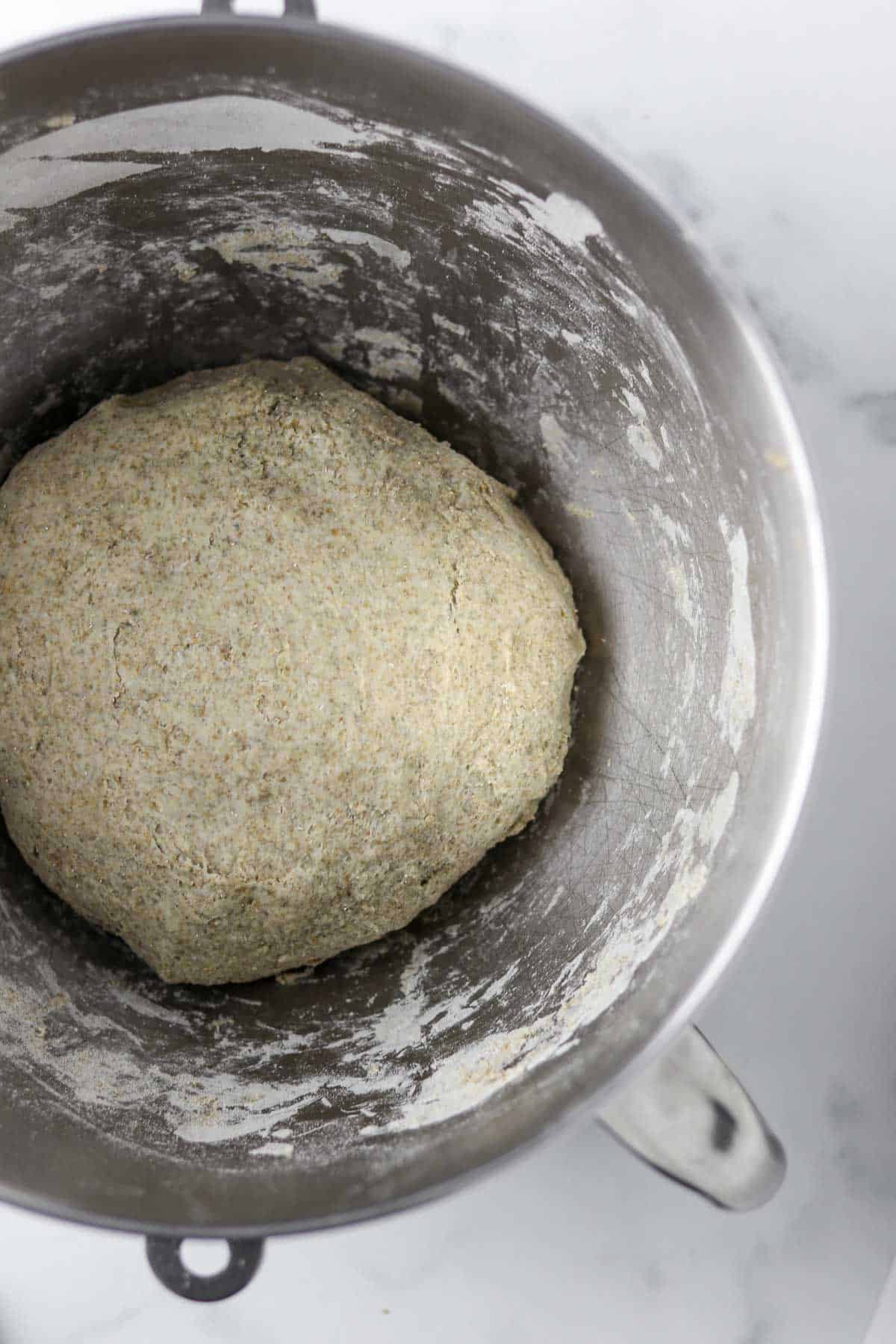
- Step 1: 8-12 hours before you plan to make the bread, combine the rye flour, bread flour, instant yeast and cold water together in a large bowl (I just use the bowl that goes with my stand mixer since that is where it will eventually go....one less bowl to wash). Hold back on the molasses and salt for now. Stir to combine as best you can (mixture will be thick), and then knead briefly with your hands until you have a cohesive mixture. The dough will be very thick and clay-like in texture. Cover with plastic wrap and set aside at room temperature.
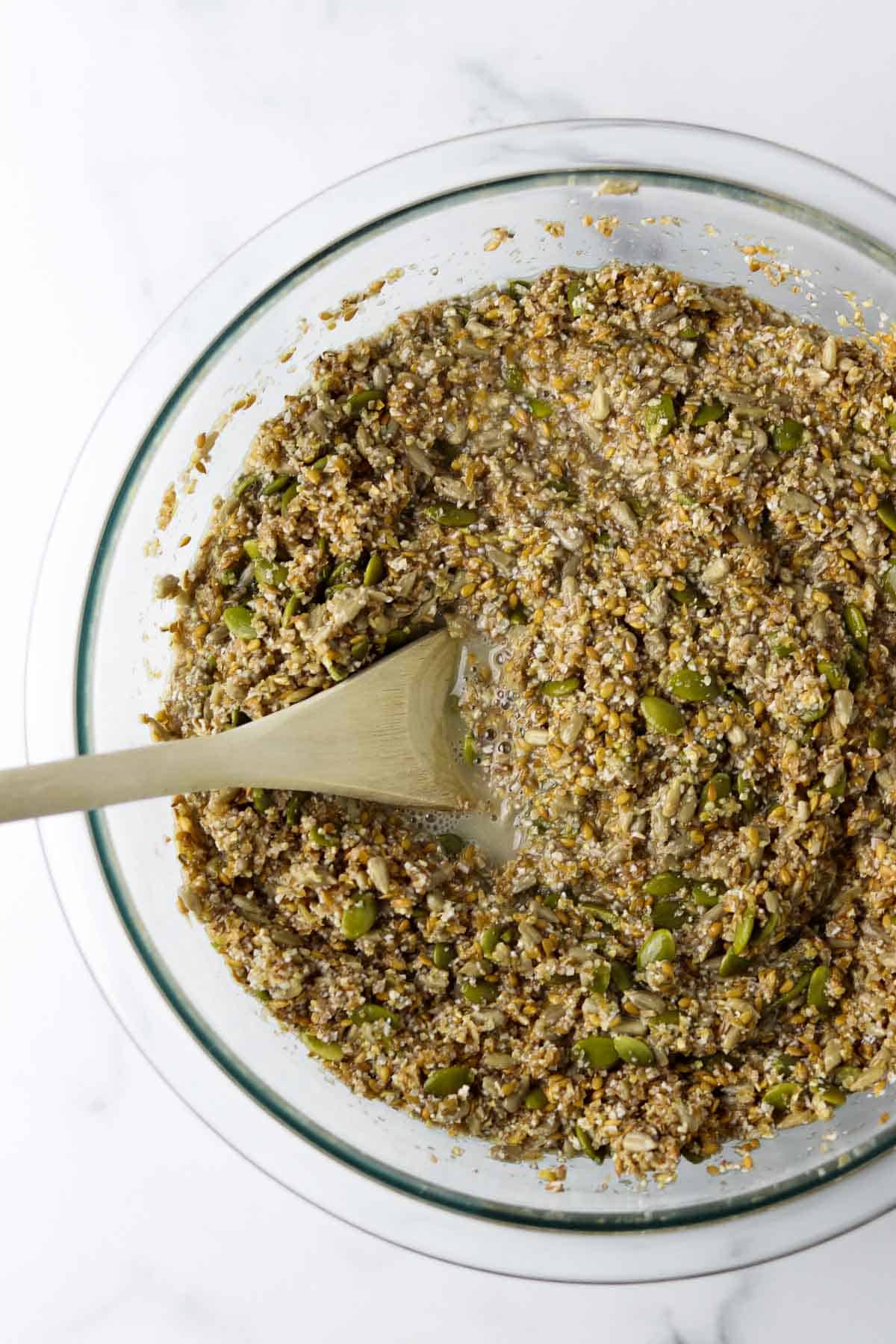
- Step 2: At the same time, mix the soaker together: Combine all the ingredients for the soaker together in a medium bowl. Cover with plastic wrap and set aside at room temperature.
The Morning of Baking:

- Step 3: 8-12 hours later, finish mixing the dough: Grease a 13 x 4 inch pullman loaf pan with butter and dust with rye flour, including the lid. Set aside. Combine the dough, molasses, salt and the soaker (do not drain the soaker. Go ahead and put in the water and the soaked seeds) in the work bowl of a stand mixer. Using the paddle attachment, mix on low for 2-3 minutes, scraping down the sides occasionally. Increase the speed to medium and continue to mix for another 2-3 minutes. The dough will be very sticky at this point.
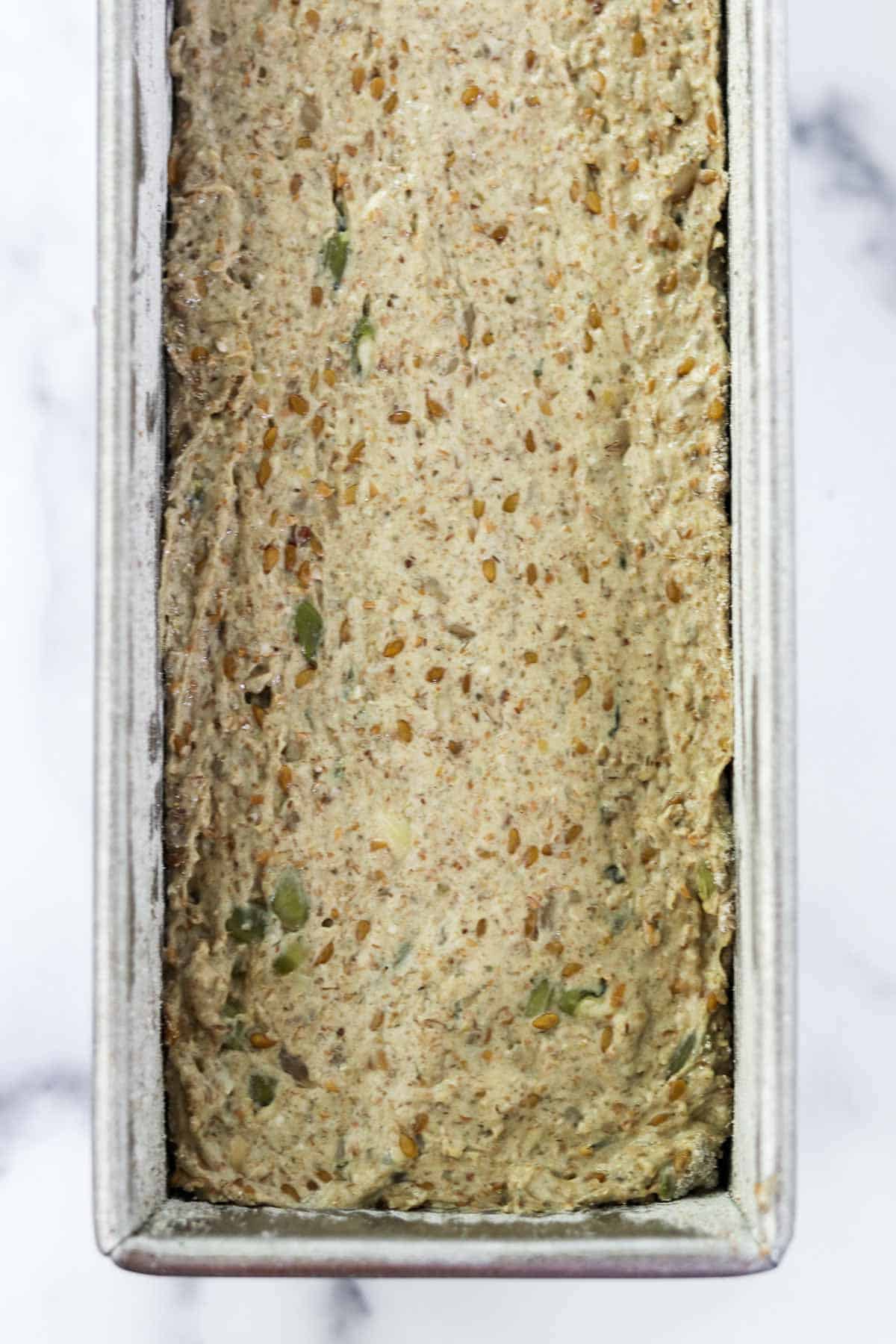
- Step 4: Scrape or spoon the dough into the prepared pan and smooth out the top. Damp fingers or a moistened spatula can help with this if you are having a hard time getting the top smooth.
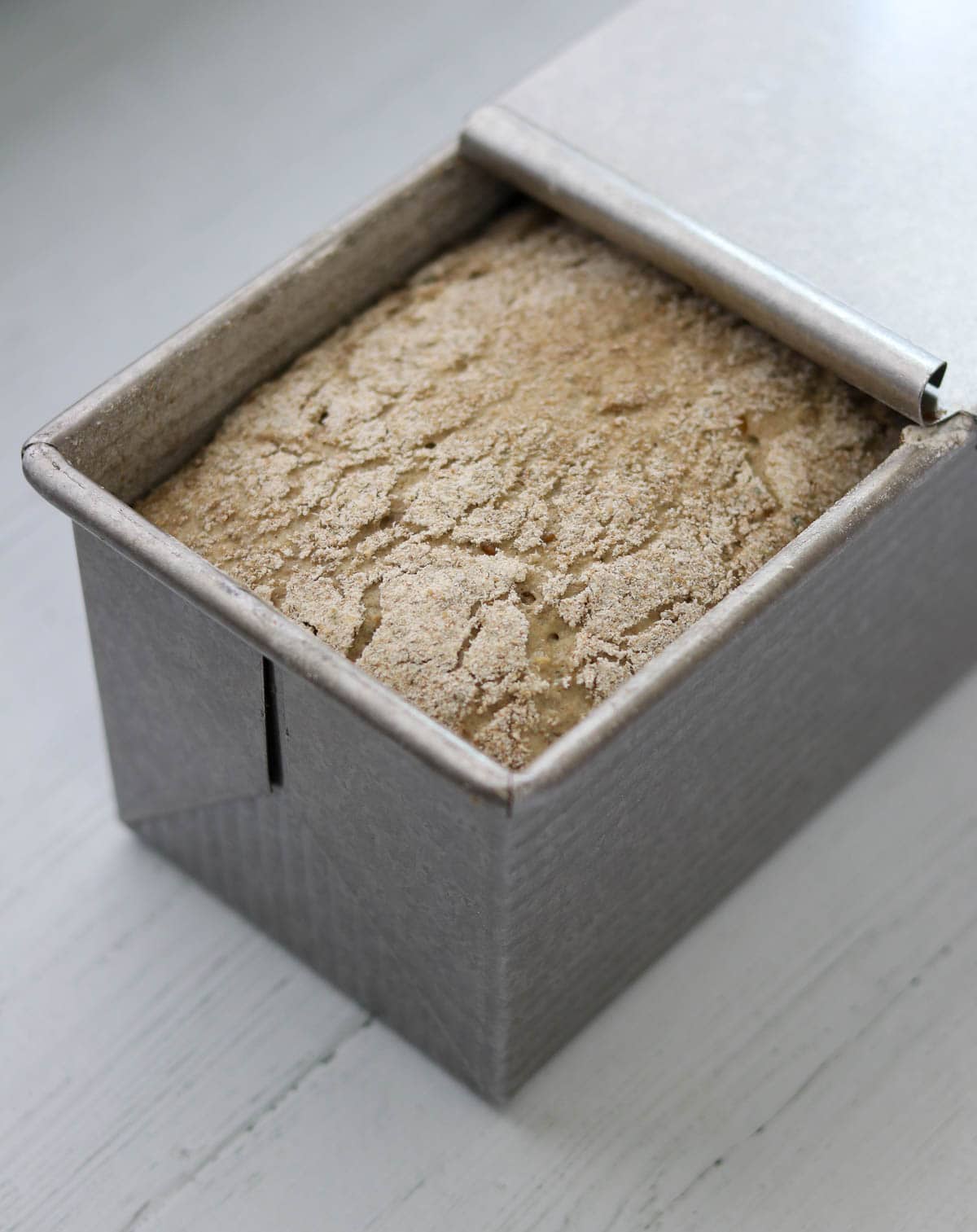
- Step 5: Dust the top of the loaf with a thin, even layer of rye flour and place the pullman lid cover on top of the pan. Let the dough rise for 1½ -3 hours at room temperature or until it is about ½ inch from the top of the pan. The time that it takes for your dough to rise will largely depend on the temperature of the dough and your kitchen.
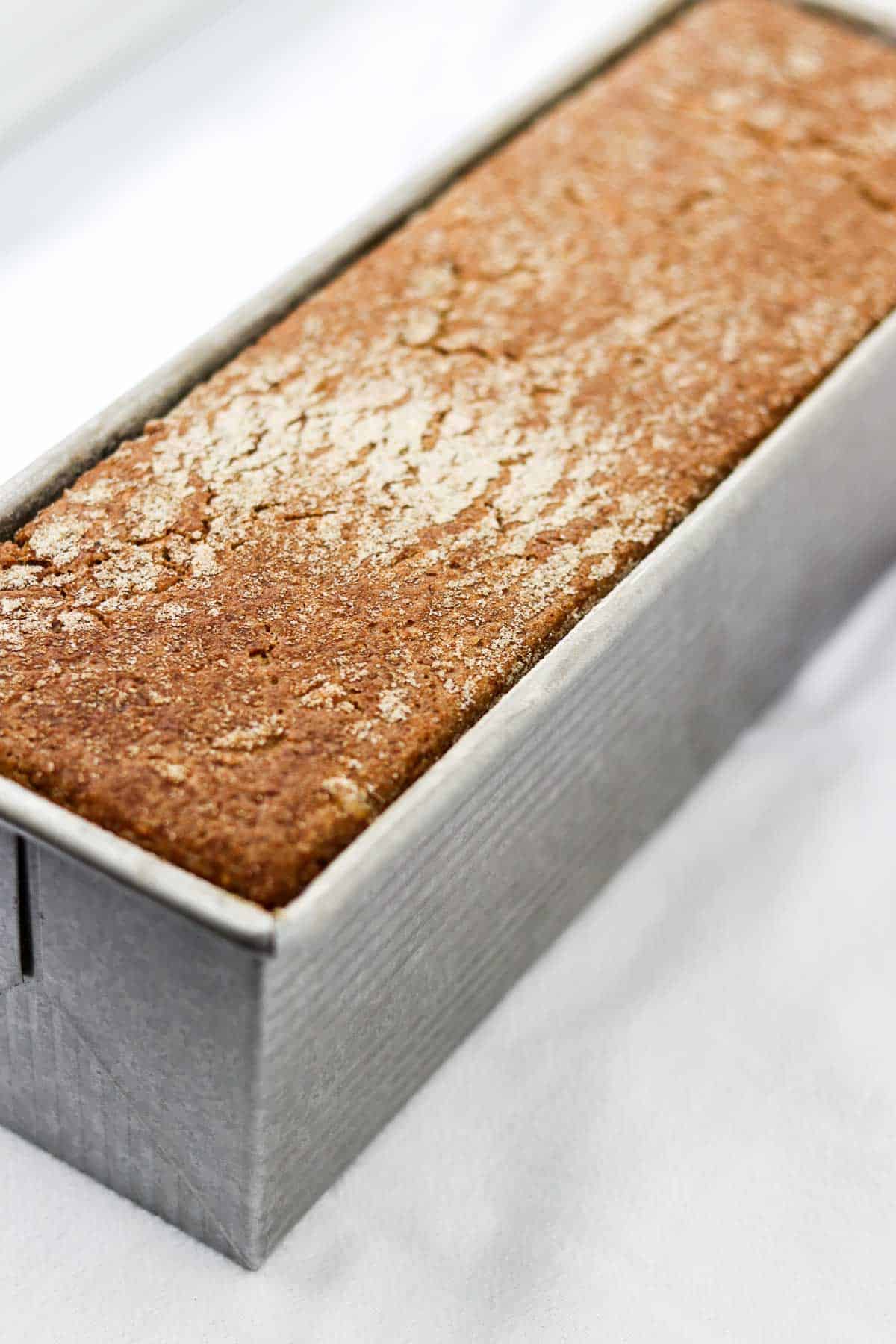
- Step 6: Meanwhile, preheat the oven to 500 degrees. Bake the loaf with the lid on for 15 minutes. Reduce the temperature to 400 degrees and continue to bake, covered, for an additional 15 minutes. Remove the pan from oven and carefully slide the lid off. Reduce the temperature to 325 degrees and bake, uncovered, for an additional 45 minutes.
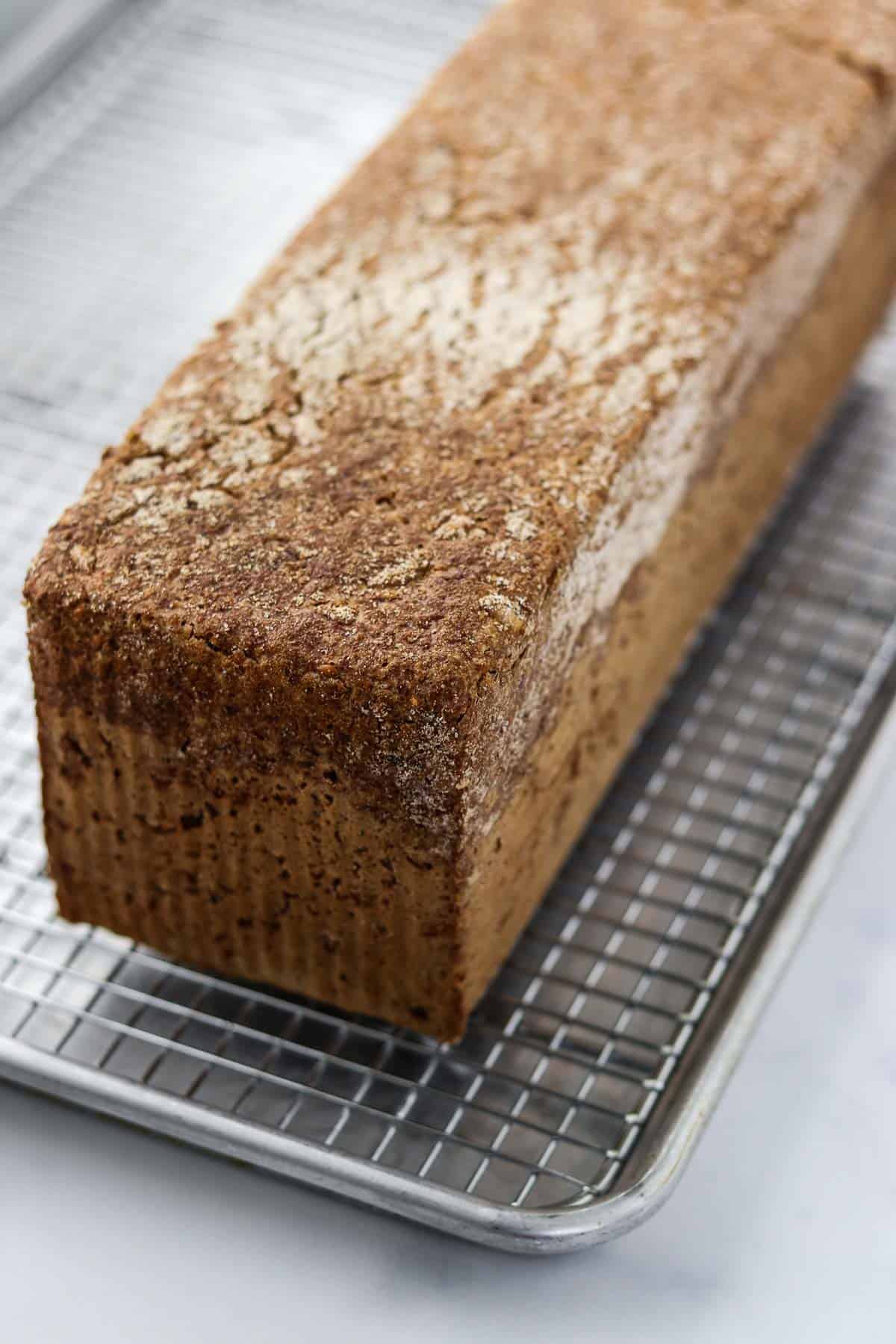
- Step 7: Remove from the oven and immediately turn the loaf out onto a metal cooling rack set inside a rimmed baking sheet. Return the bread to the oven for an additional 10 minutes. Remove from the oven and allow the bread to cool completely before slicing, at least 3 hours or overnight if you can wait! Rye bread is even better a day after baking.
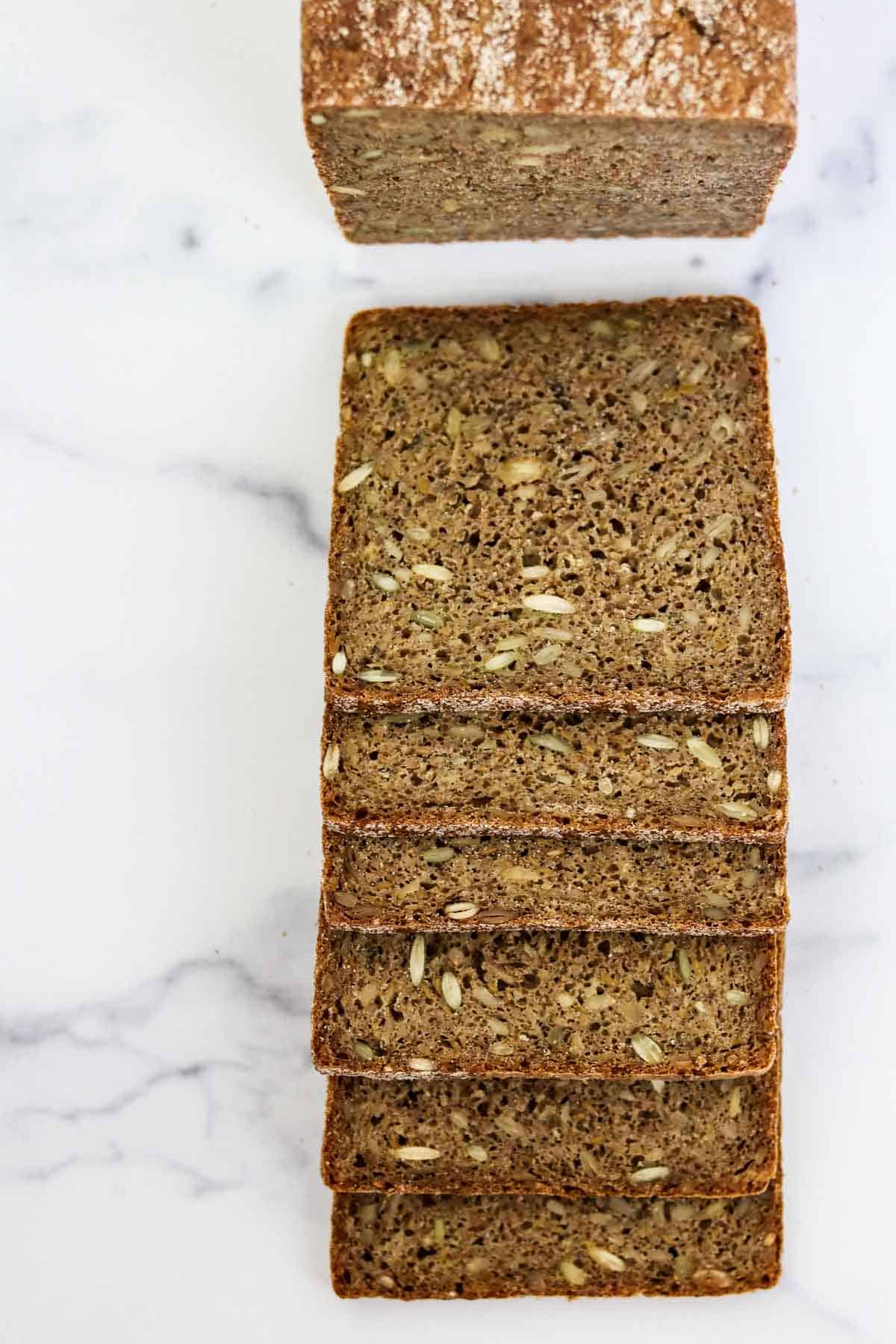
- Step 8: Remove from the oven and allow the bread to cool completely before slicing, at least 3 hours or overnight if you can wait! Rye bread is even better a day after baking.
Expert Tip
- Wait a day before enjoying your bread! Unlike wheat breads which are best eaten shortly after cooling, both the texture and flavor of rye bread improves after a rest of 12-24 hours. Once the bread has cooled completely, wrap it loosely in foil and cut into it the following day.
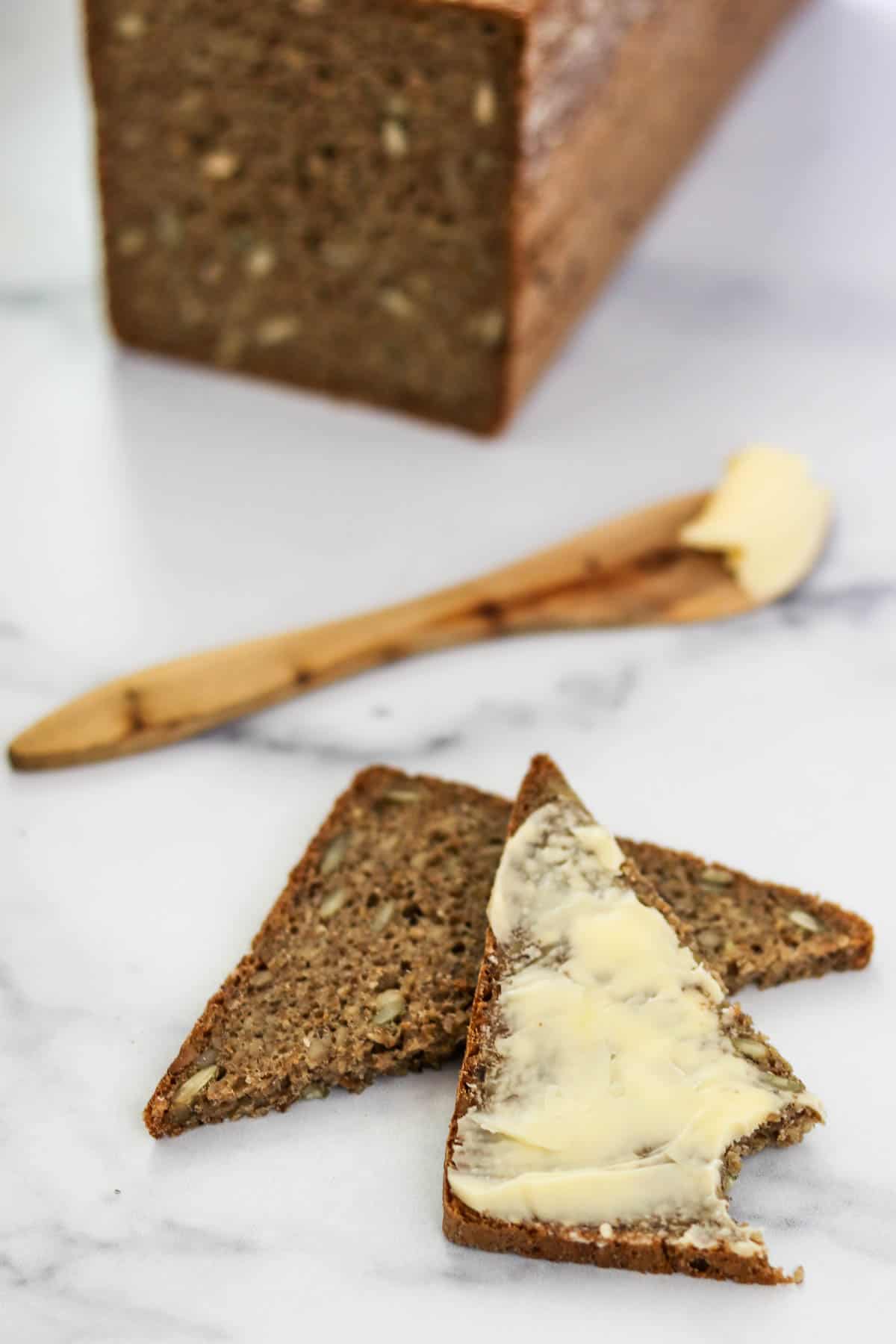
Recipe FAQs
Rugbrød simply means "rye bread" in Danish. It is a sturdy, dense loaf that is comprised of rye flour, chopped rye grains and is often studded with sunflower, pumpkin and/or flax seeds. It is often baked in a 13 x 4 inch pullman pan with a lid. This helps the rye bread bake properly and gives it its characteristic square shape.
It can be stored loosely wrapped in foil at room temperature for about 5 days.
Yes! Rugbrød freezes very well. Tightly wrap the bread (either a whole or partial loaf or slices) in plastic wrap and then either tightly wrap it in foil or place it inside of a freezer bag. It will keep for a couple of months.
I have had many readers tell me they have split the dough into two 9 x 5 loaf pans instead of using the pullman pan with excellent results. Use a heavy baking sheet as a "lid" for the covered portion of the baking and keep the baking times and temperatures the same.
If you have a smaller mixer, it may be difficult to get all of the dough in the bowl at one time. If that is the case, simply mix half of the overnight dough, molasses, salt and the soaker and then mix the second half. Combine all of the dough together in the loaf pan for baking.
Rye breads, particularly those baked here in America, often have a variety of ingredients added to them to enhance their color (making them darker in appearance) and flavor. Common additions include caramel coloring (no thank you), stout beer, cocoa powder, espresso powder and molasses. Rugbrød, in contrast, has very little additional flavoring, perhaps just a little molasses for sweetening. It is meant to be a very straightforward bread so that it can serve as a neutral base for a variety of different sandwich toppings.
Sometimes I will come across a rugbrød recipe that calls for flavor enhancers such as caraway, fennel or anise seed in the dough, but this seems to be more of an exception than the rule.
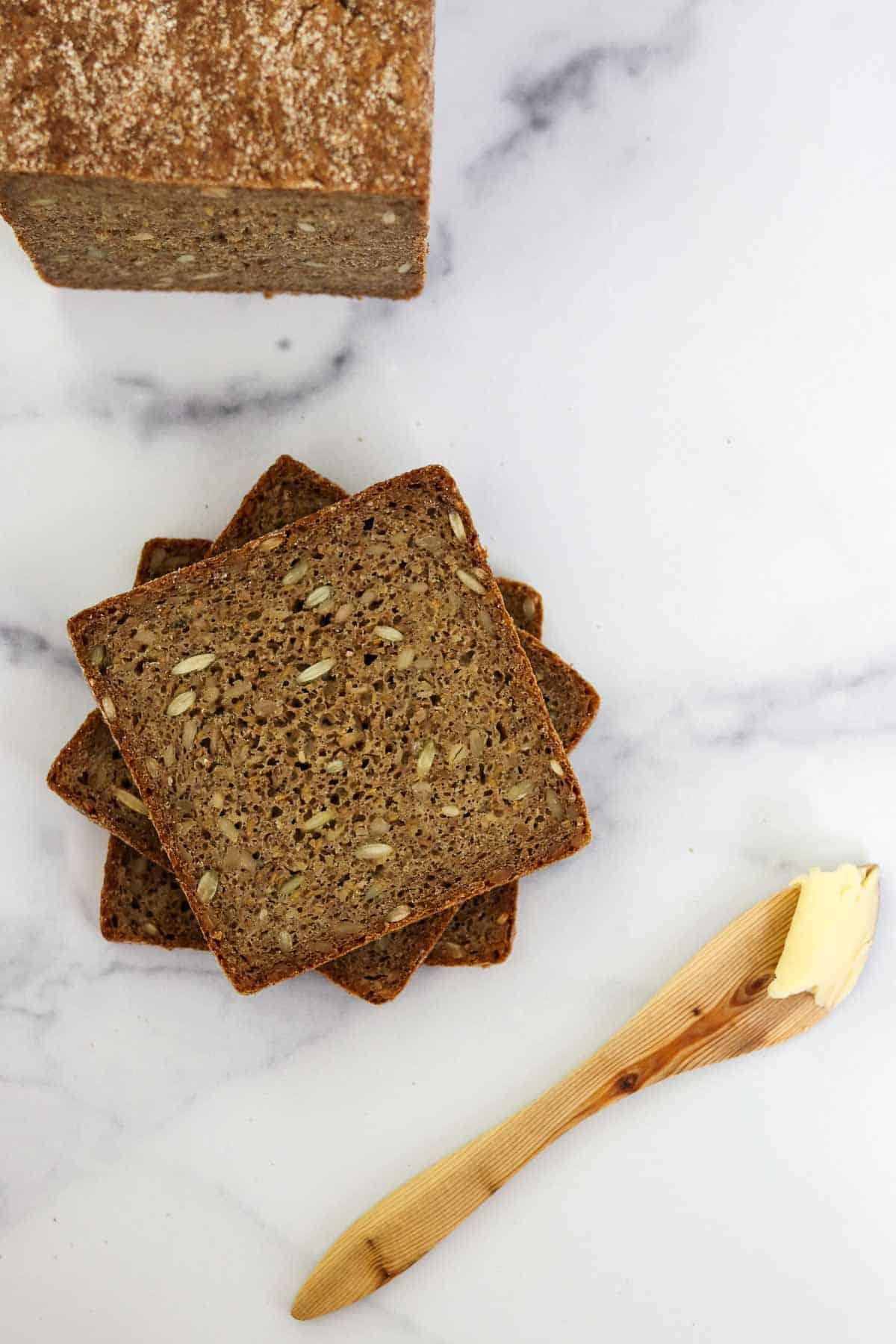
How and What to serve with Rugbrød
When it is served, Rugbrød is typically sliced thin (a little less than a quarter of an inch) and buttered liberally with salted butter. There is actually a word in Danish, tandsmør, which means "tooth butter". It refers to buttering your bread generously enough so that when you bite into it you can see your teeth marks in it.
It may be enjoyed as is, simply slathered with butter, or it can be piled with additional ingredients to form the base of smørrebrød , the famous Danish open-faced sandwiches. Check out this post about How to Make Smørrebrød at Home for everything you need to know about making these deliciously beautiful open-faced sandwiches with your rugbrød!
Related Recipes
Looking for more Scandinavian rye bread recipes? Give these a try:
If you tried this Danish Rye Bread (Rugbrød) recipe or any other recipe on my website, please leave a 🌟 star rating and let me know how it goes in the comments below. I love hearing from you!
Recipe
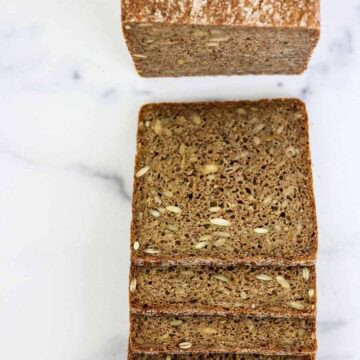
Easy Overnight Danish Rye Bread (Rugbrød)
Ingredients
For the Soaker:
- 2 ½ cups 7 grain hot cereal mix such as Bob’s Red Mill brand or rye chops see note below
- 1 cup raw sunflower seeds
- 1 cup raw pumpkin seeds (pepitas)
- ½ cup flax seeds
- 2 ⅔ cups cold water
For the Dough:
- 2 cups dark rye flour I use the Bob’s Red Mill brand, plus more for dusting the pan and loaf
- 2 cups bread flour
- 1 teaspoon instant dried yeast
- 1 ½ cups cold water
- 4 teaspoons salt
- ¼ cup molasses
- Butter for greasing the pan
Special Equipment Needed:
Instructions
- For the Soaker: Combine all the ingredients for the soaker in a medium bowl. Cover with plastic wrap and let sit at room temperature overnight, approximately 8-12 hours.
- For the Dough: Combine both flours, yeast and water in a separate bowl. Stir to combine as best you can (mixture will be thick), and then knead briefly with your hands until you have a cohesive mixture. Dough will be very thick and clay-like in texture. Cover with plastic wrap and let sit at room temperature overnight, about 8-12 hours.
- Grease a 13 x 4 inch pullman pan with lid with butter and dust with rye flour, including the lid. Set aside. Combine the soaker, flour mixture, salt and molasses in the bowl of a stand mixer. Fit mixer with paddle attachment and mix on low speed for 2-3 minutes until everything is thoroughly combined, scraping down the sides of the bowl from time to time. Increase speed to medium and mix for an additional 2-3 minutes, stopping to occasionally scrape down the sides of the bowl. Mixture will be quite sticky.
- Transfer the dough to the prepared pan. Smooth out the top and sift a thin layer of rye flour over the surface of the dough. Place lid on pan and let the dough rise for 1½ -3 hours at room temperature or until it is about ½ inch from the top of the pan. The time that it takes for your dough to rise will largely depend on the temperature of the dough and your kitchen.
- Meanwhile, preheat the oven to 500 degrees. Bake the loaf with the lid on for 15 minutes. Reduce the temperature to 400 degrees and continue to bake, covered, for an additional 15 minutes. Remove the pan from oven and carefully slide the lid off. Reduce the temperature to 325 degrees and bake, uncovered, for an additional 45 minutes. Remove from the oven and immediately turn the loaf out onto a metal cooling rack set inside a rimmed baking sheet. Return the bread to the oven for an additional 10 minutes. Remove from the oven and allow the bread to cool completely before slicing, at least 3 hours. Rye bread is even better a day after baking. If you can wait until the following day, let the completely cooled bread sit at room temperature loosely wrapped in foil overnight before slicing. The bread will keep at room temperature for 3-5 days loosely wrapped in foil. Freeze for longer storage.

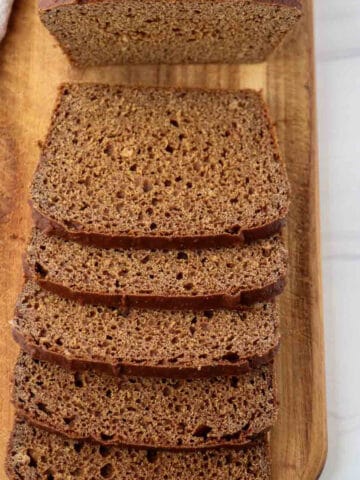

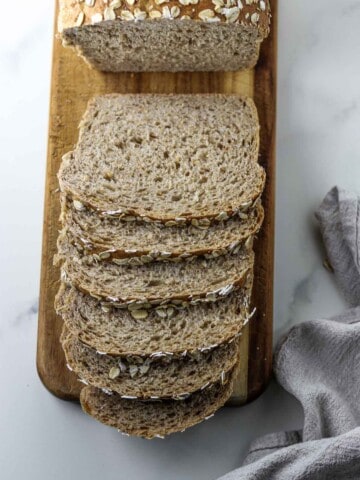
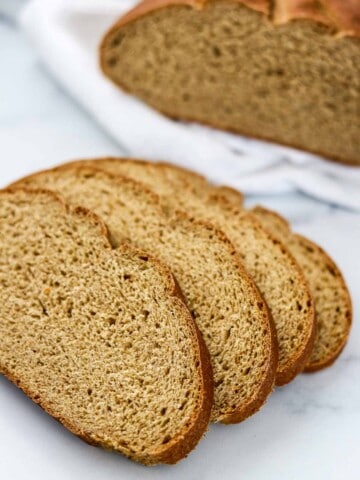

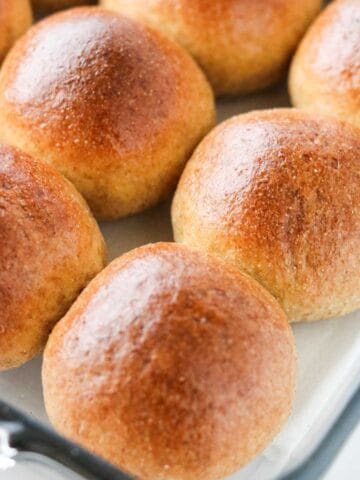

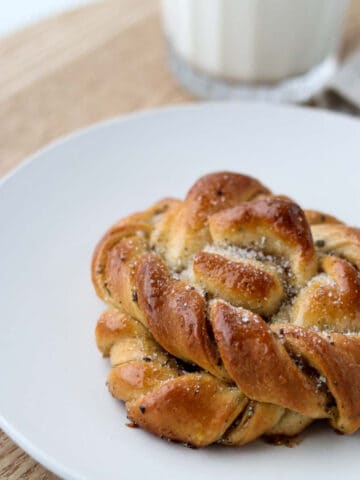
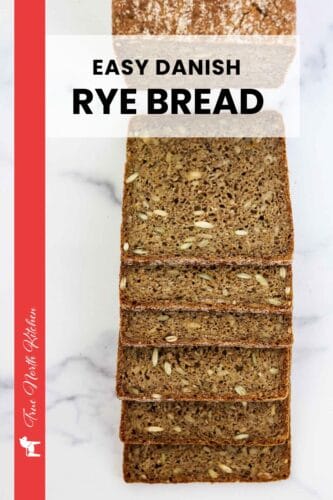
Marten K. says
I grew up in Sweden, and after a recent visit to Sweden, Denmark, and Germany found myself missing some of the great breads I had on my trip. I'm so glad I found your recipe. I've never made bread from scratch before, and this turned out great! I topped a slice of it with a thin spread of butter, a slice of cheese, lettuce, a slice of cured salmon from Costco, a slice of avocado, and a slice of boiled egg. It's truly a winner, and I'll definitely make it again...and again.
Kristi says
Thanks for your comment, Marten! I'm so glad you are enjoying the bread.
Kristi
Willa M. says
Wonderful!
Marianne McCready says
Made this recipe yesterday and I was very happy with the outcome. I used lightly toasted salted sunflower seeds - didn't have raw, used half of the amount called for in the recipe as you recommended to someone else's comment. It did not overpower with sunflower flavor - it was just fine, I did use a scant 4 tsp of salt but think next time the normal amount will be fine even though the sunflower seeds are salted. Had to use normal bread pans but covered them with a baking sheet like you also mentioned and it was fine. Thank you so much for posting this recipe!!
judy marshak says
Hi, I can't wait to try this recipe! You suggest a heavy pan as a makeshift cover on a smaller loaf pan, but i'm wondering if aluminum foil would work too? or should it not be so airtight and have a bit of air leakage?
Kristi says
Hi Judy,
The pan give the rising bread more of a ceiling so that it won't round up on the top. Aluminum foil will work but your loaf might have a rounded shape on top. Hope this helps!
Kristi
David says
I have made this recipe and it is superb, however I am on a low carb diet and was wondering if the rye chops could be substituted with multiseeds rather than multigrains, which would bring the carb count down without hopefully affecting flavour too much.
Thankyou in advance
David
Kristi says
Hi David,
I like your thinking! I've never tried replacing the grains with seeds but I think you could give it a try and see what happens. You might even try reducing the grains and replacing just a portion of them with a chopped seed mix. Happy experimenting and please report back!
Kristi
Heather says
Lovely recipe, thank you. I found some whole rye kernels and passed them through a coffee grinder in place of the rye chops. It worked beautiful, didn't take too long, and tastes very delicious.
Leslie Eckert says
I love love love this bread. I first made it for a Scandinavian dinner and now make it about every other week. Two of my friends who attended the dinner asked me for the recipe and they make it now too. After baking and cooling I slice it and freeze it so I can pull out what I’ll eat in a week. Everyone in my family loves this bread. The ingredients are easily obtainable, very easy to make, and so flavorful. I love Dave’s Killer Bread but I no longer buy it because of this recipe. Thank you for sharing it.
Kristi says
What a lovely review! Thanks so much, Leslie. And I'm glad the bread has been a hit with you and your friends!
Kristi
Evgeny says
Hello thanks for the recipe! I wanted to ask, instead of honey, can I add liquid barley malt?!
Kristi says
I've never tried it but I don't see why not! Please let me know how it works out!
Kristi
Gill says
Hello this recipe looks lovely. I'm just wondering can it be mixed by hand as I don't have a mixer?
Thank you
Kristi says
Yes you can but it is a sticky, wet dough and can get hard to stir so it might be a bit of a workout!
David Payne says
I am trying to eat a low carb diet. Do you think I could swap out some or all of the bread flour for almond flour, or is there another way you could suggest.
Thankyou in advandce
Kristi says
Hi David,
I've never tried it but because the rye is already very low in gluten, I think that eliminating the bread flour might not work very well as this bread needs some kind of gluten network to give it some structure.
Kristi
Anne Smith says
Amazing recipe! I had no sense of how this would turn out because I didn’t have bread flour, so used AP flour and simply chopped whole rye berries instead of the 7 grain cereal. Otherwise, followed the recipe as stated and I can’t believe how delicious and impressively beautiful the loaf turned out. I. Gonna dive into some of your other recipes now. Thank you!
Kristi says
Hi Anne,
So glad you liked the bread and that it worked well with your substitutions. Thanks so much for your comment!
Kristi
Jocelyn says
Hi Kristi, I would like to bake this bread but I can’t find the 7 grain mixed and rye chops at any of the supermarket. Can I use steel cut oats as substitute please? I read from your website on rye bread and came across to substitute rue chops with 7 grain mixed or steel cut oats but unsure it will work for this recipe! Thank you.
Kristi says
Hi Jocelyn,
Yes, I think that steel cut oats will work! I haven't tried it but others have had good success with that substitution. Please let me know how it turns out!
Kristi
Cynthia Marrs says
Very well written recipe. I followed it to the letter except I didn't have flax seeds on hand. My dough rose beautifully over night. After adding the wet seed mixture, it seems more wet than described. Would the lack of the flax seed cause that? The second rise in the pan didn't rise to the 1/2 inch from top. It was very active though, with bubbles. I baked as the recipe instructs. It is in the final stage of baking right now. I am looking forward to seeing the final loaf. thank you for the recipe.
Lisa says
Amazing recipe. I’ve made it several times and it always turns out perfect! Thank you for sharing!
Kristi says
Thanks for your feedback, Lisa!
Sarah says
I had my first business trip to Copenhagen last year and fell in love with this bread. I have now made your recipe many times. One early challenge I had with active dry yeast was that the loaf would look great after proofing and then collapse in the middle after baking. It tasted fine.
I did a little internet sleuthing and trial and error. I solved the problem by adding some extra flour when mixing in the molasses and salt until the dough was stringy. I used up my active dry yeast and bought instant yeast which simplifies the initial mixing step and still add more flour at the molasses step. A very consistent result now!
Kristi says
Thanks so much for your feedback, Sarah!